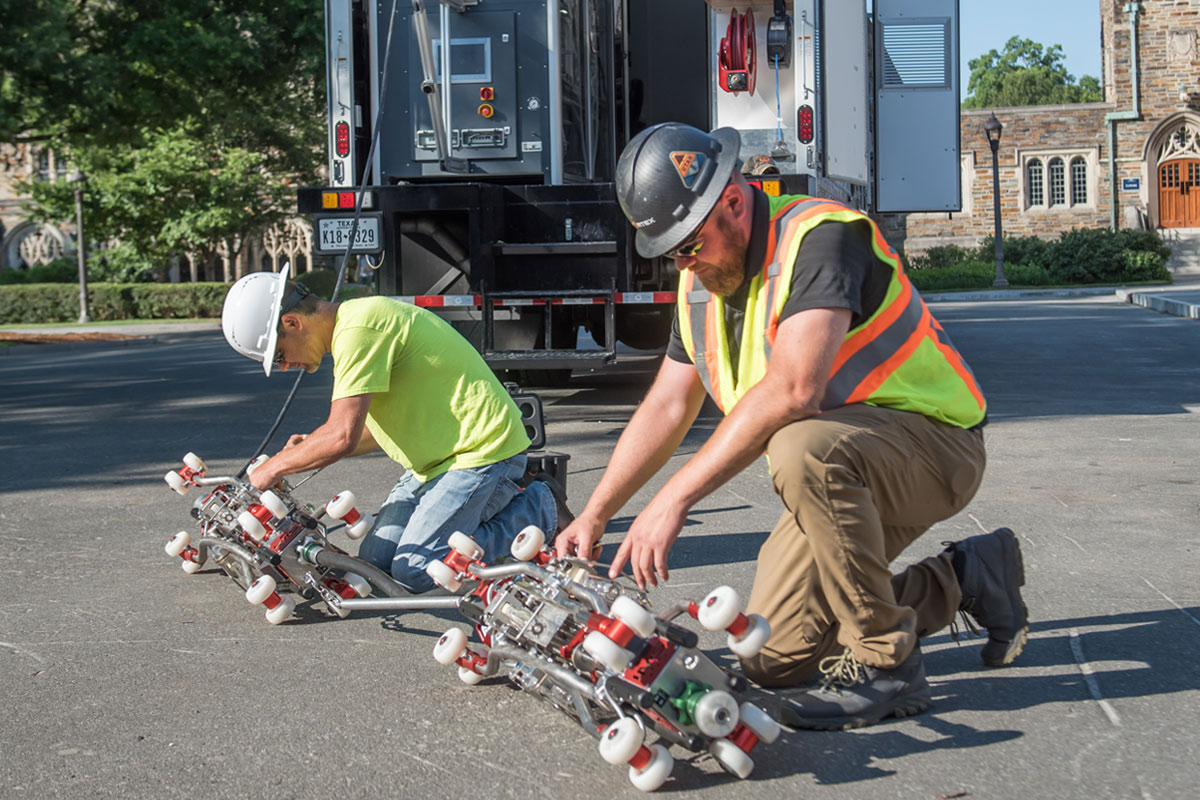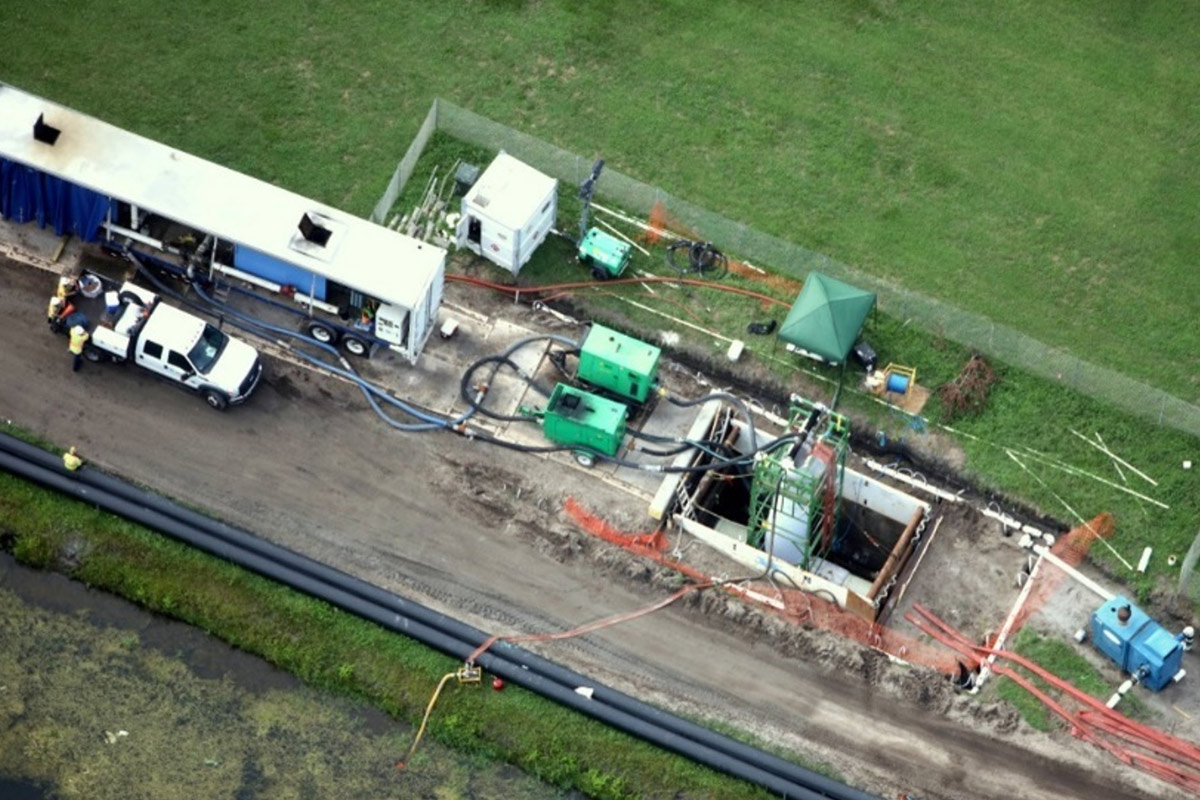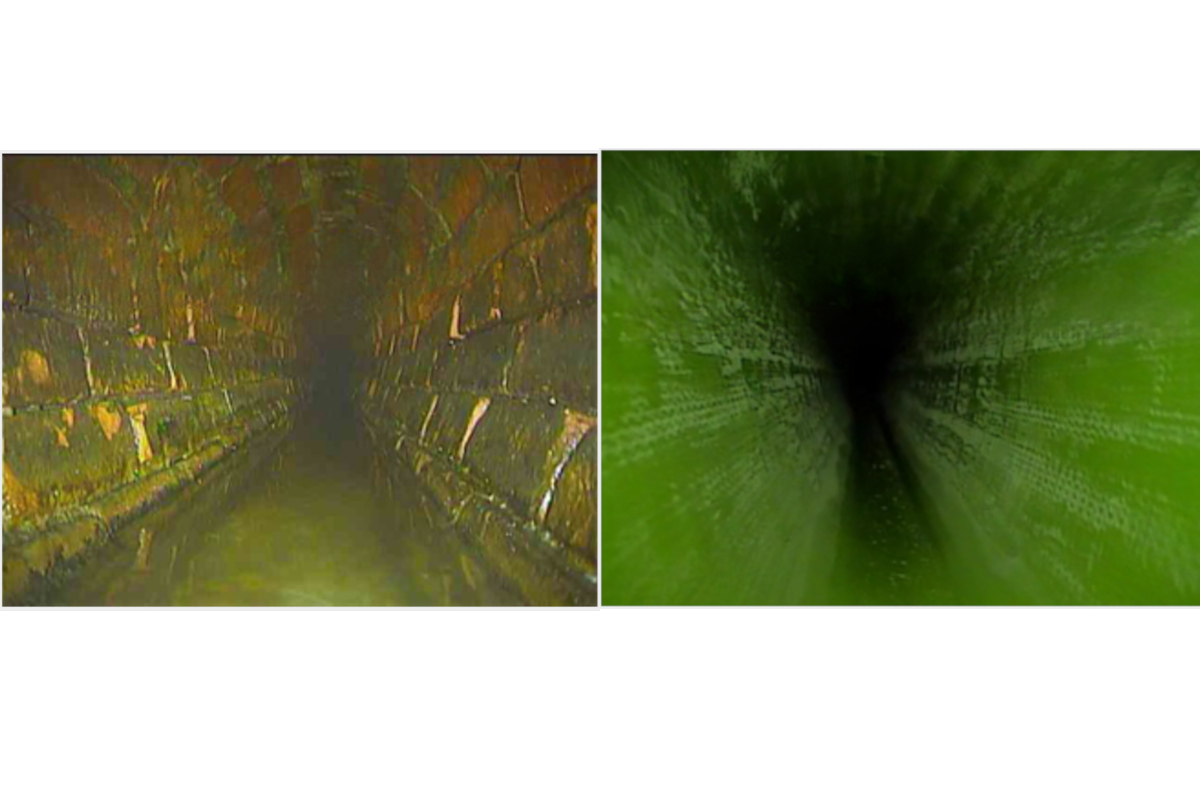
Sticking to the Program – North Olmsted, Ohio, Completes Collection Systems Milestone
The Waste Water Treatment Plant Collection Systems crews for the City of North Olmsted, Ohio, are always on the road — rightly so. In the last five years, the crews have worked diligently to adhere to a five-year plan to clean and assess the entirety of the system.
For background, North Olmsted — a western suburb of Cleveland — is a residential and retail hub. The bulk of the construction in the City took place in the 1960s and 1970s, and like most baby boomer-era communities, its underground infrastructure is aging. And like most of those communities, the City had a sewer cleaning, assessment and repair plan in place for many years. However, there was not a strict adherence to a timeline. Instead, crews would typically address areas where sewer system overflows (SSOs) were reported, and work on other areas as time, and weather allowed.
RELATED: WWETT Show 2020 Preview – PROs Ready to Convene in Indy
Collection Systems Background
That mentality began to change in 2011 as the City embarked on an aggressive plan to improve its Waste Water Treatment Plant (WWTP) and its collection systems. On the collection side, things really kicked into high gear when Greg Peters stepped into the role of Collection Systems foreman in 2014.
“There has always been some sort of a cleaning and assessment program in the City of North Olmsted,” Peters notes. “But I, and all of the guys around me, tweaked it to a five-year schedule for cleaning and televising. We completed that plan this year [2019].”
That is no small feat as the system serves approximately 37,000 residential and business customers, covering approximately 159 miles of separate sanitary sewers that range in size from 8 to 42 in. There are 2,800 manholes to access the system, which is primarily comprised of vitrified clay pipe and different styles of plastic pipes at some locations. The Collection Systems Division also handles the open drainage ditches and the City’s five lift stations.
Peters has been with the City and the WWTP since 2000. Prior to becoming foreman, he ran the CCTV truck and the jetter. “To me, it was just crazy not cleaning and [televising] the line after, so I tried to get it to a five-year plan, which we did,” he says. “We were mandated to a five-year plan, but I think we could do better. But if you get that one big rain, you get set back and I didn’t want to shoot ourselves in the foot if that happened.”
The Collection Systems Division includes assistant superintendent Joe Auner, Peters, three maintenance technicians and five equipment operators. The knowledge base in the division is made up of both seasoned veterans and relative newcomers, with the newest hire joining the team in fall 2019.
In addition to his Collection Systems crew, Peters makes many mentions of the Maintenance Division headed by Ron Ramsey, assistant superintendent. Peters and Ramsey work closely to make sure those in the field can work unobstructed. This includes custom fabricating tools and repairing what they can in-house.
Building the Program
“We make a lot of our own custom tools. They’ll tell us what they’re having a problem with and I’ll come up with something that will work,” Ramsey says. “We try it in the field and go back and fine tune it to make it perfect for what they need. We enable them to do their job.”
When chatting with Peters, it is easy to detect the pride he has in the system he helps manage and the people with whom he works. As evidenced by his response when asked what equipment the department relies on to get the job done day-in and day-out. Instead of mentioning the new combination sewer cleaner from GapVax, the decked-out CUES camera truck or any other piece of equipment, he refers to the guys instead.
RELATED: North Olmsted, Ohio, Makes Maintaining the Manholes a Priority

North Olmsted WWTP employees, Mike Warns, Jim McCutcheon and Josh Kinnison, test the Division’s new GapVax MC2008 by jetting a sludge line at the treatment plant.
“No. 1 and most important is our dedicated staff, from the administration, to the Collection Systems crew, to the WWTP Maintenance Division crew and mechanics who keep the equipment in top shape to get the job done,” he says. “The biggest thing that I have learned working at the WWTP is the importance of teamwork.”
He adds, “Every one of these guys do the same job. They are all equally responsible for the system and they are all equally dedicated.”
When it came time to build the five-year plan, Peters sat down with his team and others in the City and looked at the whole schedule that was in place. The new schedule looked at how the sewers flowed through the developments to get every street done. They also adjusted it to include a section in every ward in the City. In addition, the Division also fixed every imperfection it found; either in-house using the PipePatch system from Source One Environmental, or working with an outside contractor for manhole-to-manhole relining and T-liner installations where laterals are showing signs of deterioration.
RELATED: Welcome to Pipe Cleaning PRO
The Division also averages about 80 manhole repairs a year. On that front, the five-year plan gave the team the ability to find all of the manholes in the City, which Peters says was one of the biggest problems they faced going in.

Greg Peters (kneeling) works with Sixto Guardiola and Nick Hohmann to address a blocked sewer.
According to Peters, they knew where the manholes should be, but in some cases the structure was not visible. In those cases, either the manhole sunk over time or it was covered by landscaping. By returning the manholes to grade and repairing others, the City is experiencing less surcharging due to inflow and infiltration.
Other problems discovered include about 24 spots in the City that are targeted for root control using Duke’s Root Control and what Peters refers to as, “Restaurant Row,” an area near the retail epicenter of the City that is prone to fats, oils and grease.
“We have a yearly program in place to address ‘Restaurant Row’ and we are on our third application with Duke’s,” Peters says. “The biggest root ball we ever found was in our south interceptor that comes into the treatment plant. We had to cut that out manually, and that alone reduced some of our SSOs in the area.”
With manholes properly sealed, spot repairs complete and the entire system cleaned and televised, Peters is looking forward to the next five years and the service he and his crews can provide the residents.
“The biggest change I see is that we are on top of it, and we are able to provide a better service to the residents. We feel comfortable with our system,” he says. “With us staying on this schedule it’s going to minimize our defects and problems. And then, if we do find problems, we’ll be able to address them sooner than later.”
Tools of the Trade

Greg Peters and Jim McCutcheon huddle around a monitor as they assess a sewer
Completing this cleaning, inspection and repair work requires the right equipment. The WWTP Collection Systems Division has long-relied on MTECH, a Northeast Ohio distributor not only for GapVax equipment but also the CUES camera equipment used by the City.
It’s not uncommon for North Olmsted residents to see the WWTP camera truck on the roads. The CUES camera truck is outfitted with a Steerable Pipe Ranger II and the LAMP II allowing the crew to examine both mainlines and laterals. It also relies on a RIDGID SeeSnake for some work, as well. The data is inputted into the GraniteNet software. Peters worked with GraniteNet to fine tune the software to the City’s needs.
On the heavy equipment side of the business, the Collection Systems Division recently divested of its 2010 GapVax MC2008 combination cleaner — giving it to the City’s service department to clean storm sewers. That truck was integral to the completion of the five-year plan, and the crew liked it so much that it has upgraded to a new GapVax MC2008.
Delivered in November 2019, the new truck includes the hydro excavation package for working on and around manholes and an 800-gpm trash pump, which will make working at the WWTP and lift stations much easier.
Beyond the durability of the truck, Ramsey says that the WWTP made the decision to go back to GapVax based on the relationship with MTECH. “They represent the product well, and that’s one of the big battles here, product representation,” he says. “I don’t want somebody who will sell me a truck and then disappear. Those guys [at MTECH] are on it. They come out and help our guys with the equipment.”
Aside from the physical equipment, training is another key tool to the Division’s success. All of the Collection Systems workers are
Ohio EPA-certified and they receive hands-on training throughout the year.
“The last training we went to was 811 training because we are doing a whole lot more digging. Training also keeps us updated on the new technologies that are out there,” Peters says. “We see the value in training. Knowledge is power.”




